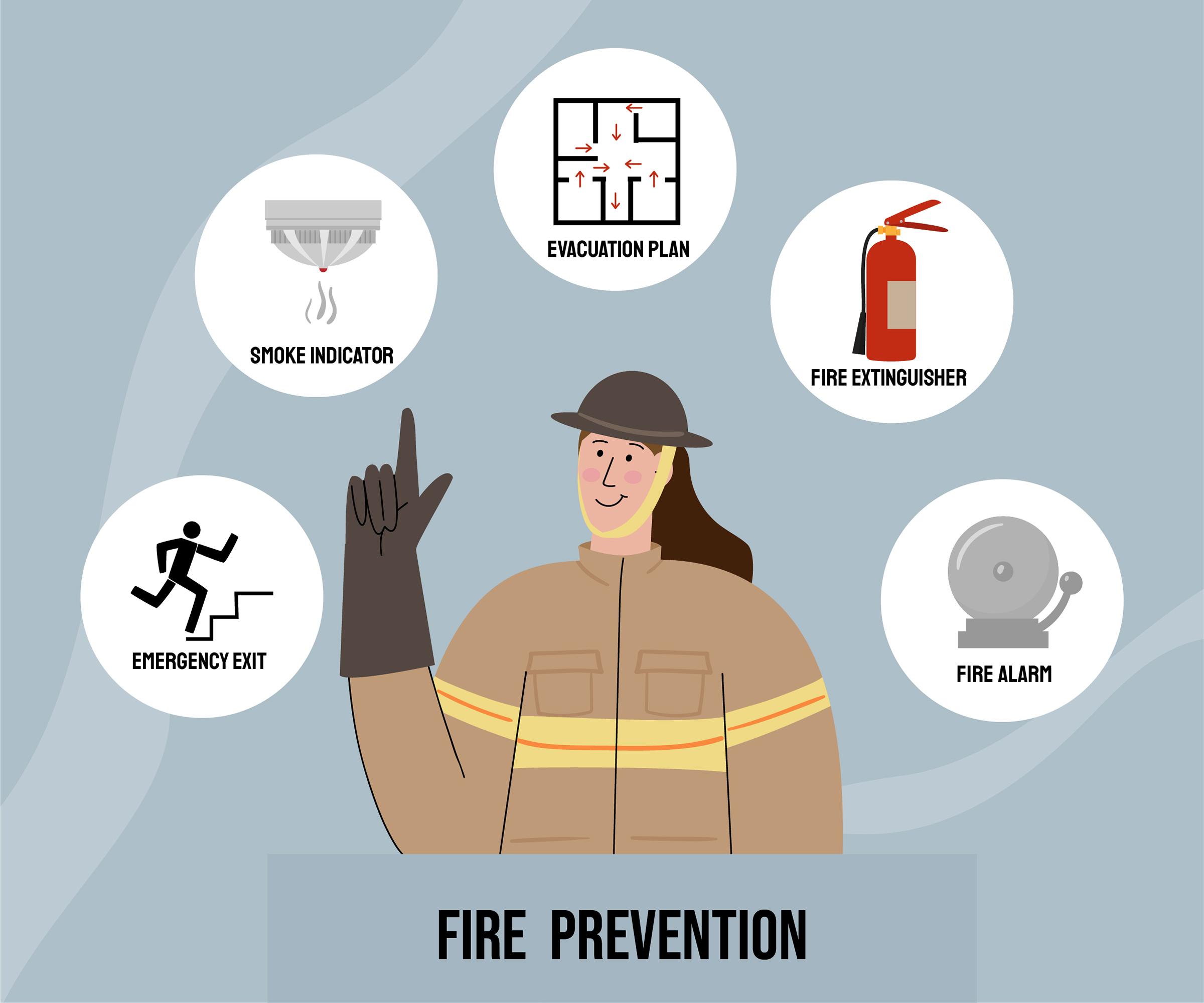Bangladesh’s industrial landscape is vibrant and diverse, contributing significantly to the nation’s economy. However, amidst the hustle and bustle of industrial activities, there exist inherent risks, one of the most critical being the occurrence of fires. Understanding the common causes of fires in the industrial sector is paramount for implementing effective prevention measures. In this article, we delve into the top 10 causes of fires in Bangladesh’s industrial settings, shedding light on potential risks and strategies for mitigation.
-
Electrical Faults:
Electrical faults represent one of the leading causes of industrial fires in Bangladesh. Overloaded circuits, damaged wiring, and faulty electrical equipment can all trigger electrical fires. In industries where machinery and equipment rely heavily on electricity, regular inspections and maintenance of electrical systems are crucial for preventing such incidents.
-
Combustible Dust:
Industries that involve processes such as milling, grinding, and woodworking are susceptible to combustible dust fires. Fine particles of combustible materials, such as wood, flour, or metal powders, can accumulate in workspaces and ignite when exposed to sparks or heat sources. Implementing proper ventilation, dust control measures and regular cleaning routines can mitigate the risk of combustible dust fires.
-
Flammable Liquids and Gases:
Industries handling flammable liquids and gases, such as petroleum refineries, chemical plants, and gas storage facilities, face inherent fire hazards. Leakages, improper storage practices, and inadequate containment measures can result in catastrophic fires and explosions. Strict adherence to safety protocols, including the use of proper storage containers, installation of gas detection systems, and employee training, is essential for preventing accidents.
-
Hot Work Operations:
Welding, cutting, and soldering operations, collectively known as hot work, pose a significant fire risk in industrial settings. The intense heat generated during these processes can ignite nearby combustible materials or flammable gases. Implementing stringent safety procedures, such as obtaining hot work permits, establishing fire watch protocols, and providing fire-resistant barriers, helps minimize the likelihood of fires during hot work activities.
-
Equipment Malfunctions:
Malfunctioning industrial equipment, such as boilers, furnaces, and machinery, can malfunction and ignite surrounding materials. Poor maintenance practices, lack of regular inspections, and aging equipment increase the likelihood of equipment-related fires. Implementing preventive maintenance schedules, conducting equipment inspections, and promptly addressing any issues can mitigate this risk.
-
Human Error
Human error remains a significant contributing factor to industrial fires in Bangladesh. Negligent actions, such as improper handling of flammable materials, careless smoking, or failure to follow safety protocols, can lead to devastating consequences. Comprehensive training programs, strict enforcement of safety procedures, and fostering a culture of safety awareness among employees are essential for minimizing the impact of human error.
-
Arson and Sabotage:
Intentional acts of arson or sabotage pose a serious threat to industrial facilities, particularly in highly competitive or politically sensitive sectors. Disgruntled employees, competitors, or external actors may seek to cause harm by setting fires or tampering with equipment. Implementing robust security measures, conducting background checks on personnel, and maintaining vigilance can help deter and detect potential acts of arson or sabotage.
-
Improper Storage of Hazardous Materials:
Industries that store or handle hazardous materials must adhere to strict guidelines for their safe storage and handling. Failure to comply with regulations regarding the storage of flammable liquids, chemicals, or gases can result in fires and environmental hazards. Employing proper storage practices, using appropriate containment systems, and providing employee training on handling hazardous materials are critical for preventing accidents.
-
Lack of Fire Suppression Systems:
Inadequate fire suppression systems, such as fire extinguishers, sprinkler systems, and fire alarms, leave industrial facilities vulnerable to uncontrolled fires. Insufficient or poorly maintained firefighting equipment can delay response times and exacerbate the spread of fires. Regular inspections, testing, and maintenance of fire suppression systems are essential for ensuring their functionality in the event of a fire emergency.
- Overheating and Friction:
Industrial processes that generate significant heat through friction or mechanical operations, such as conveyor belts, bearings, and motors, can pose a fire risk if not properly monitored. Overheating components can ignite nearby combustible materials or lubricants, leading to fires. Implementing temperature monitoring systems, lubrication schedules, and equipment shutdown protocols can help mitigate the risk of fires due to overheating and friction.
Conclusion:
Understanding the top causes of fires in Bangladesh’s industrial sector is essential for implementing proactive measures to prevent accidents and safeguard lives and assets. By addressing electrical faults, mitigating combustible dust hazards, implementing strict safety protocols, and investing in fire suppression systems, industrial facilities can reduce the risk of fires and ensure the continuity of operations. Through continuous education, training, and vigilance, Bangladesh’s industrial sector can strive towards a safer and more resilient future.

